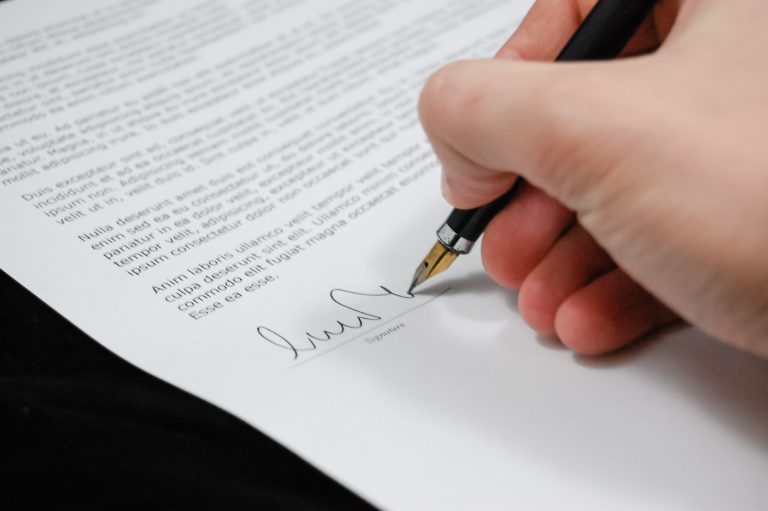When looking at mesothelioma settlement amounts, it’s not a one-size-fits-all situation. Several key things really shape how much a case might be worth. It’s all about the specifics of each person’s situation, and understanding these can help set expectations.
Severity of Asbestos Exposure
The amount of time a person was exposed to asbestos, the type of asbestos products involved, and the intensity of that exposure all play a big part. For instance, someone who worked for decades in an industry with heavy asbestos use, like shipbuilding or construction, might have a stronger claim than someone with a shorter or less direct exposure. The documented history of this exposure is often a primary focus. This history helps establish the link between the asbestos and the illness. It’s about proving that the exposure directly led to the mesothelioma diagnosis. This is why gathering detailed work histories and identifying specific products is so important for asbestos litigation.
Type and Stage of Mesothelioma
Not all mesothelioma is the same, and neither is its progression. The specific type of mesothelioma (e.g., pleural, peritoneal, pericardial) and its stage at diagnosis significantly impact prognosis and treatment needs. Later stages or more aggressive types generally lead to higher settlement considerations because the prognosis is often poorer, and the need for extensive medical care is greater. The medical evidence detailing the type and stage is therefore quite important.
Victim’s Age and Life Expectancy
Age and life expectancy are also major considerations. A younger victim, diagnosed with mesothelioma, will likely face a longer period of lost income and require more extensive future medical care and support compared to an older victim. This longer timeframe for suffering and financial impact can lead to a higher settlement amount. The calculation here tries to account for the years of life and potential earnings that have been cut short by the illness.
Calculating Potential Mesothelioma Settlement Amounts
Figuring out what a mesothelioma settlement might be worth involves looking at several key areas. It’s not just about the diagnosis itself, but how it impacts a person’s life both now and in the future. The total amount is a reflection of the damages suffered by the victim.
Medical Expenses and Future Care Costs
One of the biggest components of any settlement calculation is the cost of medical treatment. This includes everything from the initial diagnosis and tests to ongoing therapies, surgeries, and medications. Mesothelioma treatment can be incredibly expensive, and it often continues for a long time. We have to consider:
- Past medical bills: All the costs incurred up to the point of settlement.
- Future medical needs: This is a big one. It covers anticipated treatments, hospital stays, doctor visits, and any necessary home care or equipment.
- Rehabilitation and therapy: Physical therapy, occupational therapy, and other supportive care needed to manage the illness.
It’s important to get a clear picture of these costs, often with the help of medical professionals, to make sure the settlement covers everything needed for care. This is where understanding medical expenses and future care costs becomes really important.
Lost Wages and Earning Capacity
When someone is diagnosed with mesothelioma, their ability to work is often severely impacted, if not eliminated entirely. This loss of income is a significant factor in settlement calculations. We look at:
- Past lost wages: Income the person couldn’t earn from the time they stopped working until the settlement.
- Loss of future earning capacity: This is about how much money the person would have earned over their remaining working life if they hadn’t become ill. This can be a substantial amount, especially for younger individuals or those in high-paying professions. The long latency period of asbestos-related diseases means that exposure occurred many years prior.
- Loss of benefits: This can include lost retirement contributions, health insurance, and other employment-related perks.
Pain, Suffering, and Emotional Distress
Beyond the direct financial costs, mesothelioma takes a huge toll on a person’s quality of life and emotional well-being. Compensation for pain and suffering acknowledges the physical pain, mental anguish, and emotional distress caused by the illness and its treatment. This is often a more subjective area to calculate, but it’s a vital part of the overall settlement. Factors considered include:
- The severity and duration of physical pain.
- The impact on daily activities and the ability to enjoy life.
- The emotional toll on the victim and their family, including anxiety, depression, and fear.
- Loss of companionship and consortium for spouses and family members.
The Role of Legal Representation in Mesothelioma Settlements
When facing a mesothelioma diagnosis, the legal process can seem overwhelming. Having the right legal team makes a significant difference in securing fair compensation. Attorneys specializing in asbestos litigation understand the complexities involved and can guide victims through each step.
Expertise in Asbestos Litigation
Mesothelioma cases are unique. They often involve tracing asbestos exposure back many years, which requires specific knowledge and investigative resources. Lawyers experienced in this area know which companies might be responsible and how to build a strong case. They are familiar with the medical evidence needed to prove the link between asbestos exposure and the illness. This specialized knowledge is key to a successful claim, as they can effectively present your case to the responsible parties or the court. They understand how to approach mesothelioma lawsuits and what evidence is most persuasive.
Negotiation Strategies with Defendants
Negotiating with asbestos companies or their insurers can be challenging. These entities often have legal teams working to minimize payouts. A skilled attorney acts as your advocate, handling all communications and negotiations. They will assess the value of your claim, considering factors like medical bills, lost income, and the impact on your quality of life. Their goal is to reach a settlement that adequately reflects your damages. They know how to present your case to get the best possible outcome, working to secure fair compensation on your behalf.
Navigating Trust Funds and Lawsuits
Many companies that produced asbestos products have established trust funds to compensate victims. These trusts have specific rules and procedures for filing claims. An experienced lawyer can help you determine which trusts you may be eligible for and assist in preparing the necessary paperwork. They can also advise whether pursuing a lawsuit or a trust fund claim is the better option for your specific situation. This involves:
- Identifying all potential sources of compensation.
- Gathering all required documentation.
- Submitting claims accurately and on time.
Understanding Mesothelioma Settlement Averages
It’s natural for individuals and families affected by mesothelioma to want an idea of what compensation might look like. While every case is unique, understanding typical settlement ranges can provide a helpful baseline. It’s important to remember that these figures are averages and can vary widely based on many factors.
Typical Payout Ranges
Mesothelioma lawsuit settlements often fall within a certain bracket. Many cases settle for amounts between $1 million and $2 million. However, it’s also true that some settlements can be lower, and others can be considerably higher. The outcome of a trial verdict can sometimes influence settlement negotiations, and these verdicts can be substantially larger, sometimes reaching into the tens of millions. The specific circumstances of each case are the primary driver of the final amount.
Factors Affecting Average Mesothelioma Settlement Amounts
Several elements contribute to the wide range seen in mesothelioma compensation. These aren’t just random numbers; they reflect the real impact of the illness and the exposure.
- Severity of Asbestos Exposure: How long and how intensely was the person exposed to asbestos? This is often a key point.
- Medical Costs: The total cost of treatment, both past and anticipated future care, plays a big role.
- Lost Income: This includes not just wages lost up to the settlement but also the projected loss of future earning capacity.
- Victim’s Age and Health: A younger person with a longer life expectancy might have a different calculation than an older individual.
- Jurisdiction: Where the lawsuit is filed can sometimes affect outcomes.
The Impact of Trial Verdicts on Settlements
Sometimes, the possibility of a jury trial and its potential verdict can influence settlement talks. If a jury awards a very large sum in a similar case, it might encourage defendants to offer more in settlement to avoid that risk. Conversely, if verdicts have been lower, it might lead to more conservative settlement offers. Understanding the landscape of recent mesothelioma verdicts can offer insight into these dynamics. It’s a complex interplay between the desire for a quick resolution and the potential for a much larger award at trial.
Asbestos Trust Funds and Mesothelioma Compensation
When individuals are diagnosed with mesothelioma, often due to past exposure to asbestos, they may seek compensation for their suffering and medical costs. For many, especially those who worked for companies that have since gone bankrupt, asbestos trust funds represent a significant avenue for recovery. These trusts were established as part of bankruptcy proceedings to ensure that victims of asbestos exposure could still receive compensation.
How Asbestos Trusts Work
When a company files for bankruptcy, a portion of its assets is set aside to create an asbestos personal injury trust. This fund is managed by trustees who review and process claims from individuals who were exposed to the company’s asbestos products and subsequently developed asbestos-related diseases. The purpose is to provide a structured way to compensate victims without the company having to face individual lawsuits after its reorganization.
- Establishment: Trusts are created during bankruptcy proceedings.
- Funding: A specific amount of money or assets is allocated to the trust.
- Administration: Trustees manage the fund and evaluate claims.
- Distribution: Compensation is paid out to eligible claimants.
The amount awarded from a trust can vary widely based on the severity of the illness, the evidence of exposure, and the specific rules of that particular trust. Each trust has its own set of procedures and payout schedules.
Eligibility for Trust Fund Claims
To be eligible for compensation from an asbestos trust, a claimant must demonstrate a connection between their asbestos exposure and the company that established the trust. This typically involves providing evidence such as:
- Proof of employment at specific worksites or with specific companies.
- Medical records confirming an asbestos-related diagnosis (like mesothelioma, asbestosis, or lung cancer).
- Testimonies or affidavits from coworkers or other witnesses.
- Documentation detailing the type of asbestos products used and the duration of exposure.
Each trust has specific criteria for what constitutes sufficient evidence, and these requirements can differ significantly. It is important to understand these individual trust requirements to build a strong claim.
Distinguishing Trust Claims from Lawsuits
While both asbestos trust funds and lawsuits aim to provide compensation, they operate under different legal frameworks. A lawsuit is filed directly against a company that is still in operation, seeking damages through the court system. Trust fund claims, on the other hand, are filed against a trust established by a bankrupt company.
- Lawsuits: Involve litigation, potential jury trials, and direct negotiation with the company or its insurers.
- Trust Claims: Are administrative processes handled by trustees, generally without court involvement unless there is a dispute.
It is often possible to pursue both types of claims if exposure occurred with multiple companies, some of which are still operating and others that have established trusts. However, there are rules about double recovery, meaning compensation received from one source may affect the amount received from another. Navigating these complexities requires careful legal guidance to maximize potential recovery.
Key Considerations for Mesothelioma Victims and Families
Statute of Limitations for Claims
When dealing with a mesothelioma diagnosis, time is a significant factor. Each state has specific deadlines, known as statutes of limitations, for filing personal injury or wrongful death claims. These deadlines begin from the date of diagnosis or, in some cases, the date of death. Missing this deadline means losing the right to seek compensation, no matter how strong the case. It’s important to understand that these laws can be complex and vary widely. Prompt action is therefore necessary to protect your legal rights.
The Importance of Evidence Gathering
Building a strong mesothelioma claim relies heavily on solid evidence. This includes documentation of asbestos exposure, such as employment records, witness testimonies, and any available medical records detailing the diagnosis and prognosis. The more detailed and verifiable the evidence, the better the position a victim will be in. This evidence helps establish the link between asbestos exposure and the illness, which is a core requirement for any claim. Gathering this information can be challenging, especially if the exposure occurred many years ago. For many, settling out of court is a common path, often influenced by the cost-effectiveness for defendants [5626].
Seeking Specialized Legal Counsel
Navigating the legal landscape of mesothelioma claims can be overwhelming. Working with attorneys who specialize in asbestos litigation is highly recommended. These legal professionals have a deep familiarity with the specific laws, the companies responsible for asbestos exposure, and the various compensation avenues available, including asbestos trust funds. They can guide families through the process, manage the complexities of evidence collection, and negotiate with defendants. While trial verdicts can sometimes lead to higher compensation, they also carry the risk of receiving nothing [25eb]. A specialized lawyer can help assess the best strategy for your unique situation.
Related Information









